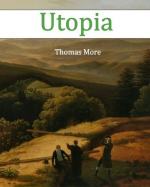|
This section contains 4,046 words (approx. 14 pages at 300 words per page) |

|
SOURCE: "Utopias from 1500 to 1850," in The Quest for Utopia: An Anthology of Imaginary Societies, Henry Schuman, Inc., 1952, pp. 286-95.
In the following essay, the critics discuss the revival of utopianism during the Renaissance, focusing on themes of communism, religion, and natural science in Utopian thought.
With the rise of humanism and naturalism, and with the general revolution in human thought at the time of the Renaissance, utopianism revived. The medieval ideal of a static, divinely sanctioned order persisted in the writings of Robert Crowley in the sixteenth century, and lingered as the ideal of one aspect of seventeenth-century utopianism, though in national rather than international application. The semiutopian ideal of the Holy Roman universal society persisted through the middle ages and revived in modified form in Tommaso Campanella's Spanish Monarchy and in the hopes for a united Christendom which centered about Philip II of Spain. In 1516, Thomas More...
|
This section contains 4,046 words (approx. 14 pages at 300 words per page) |

|


